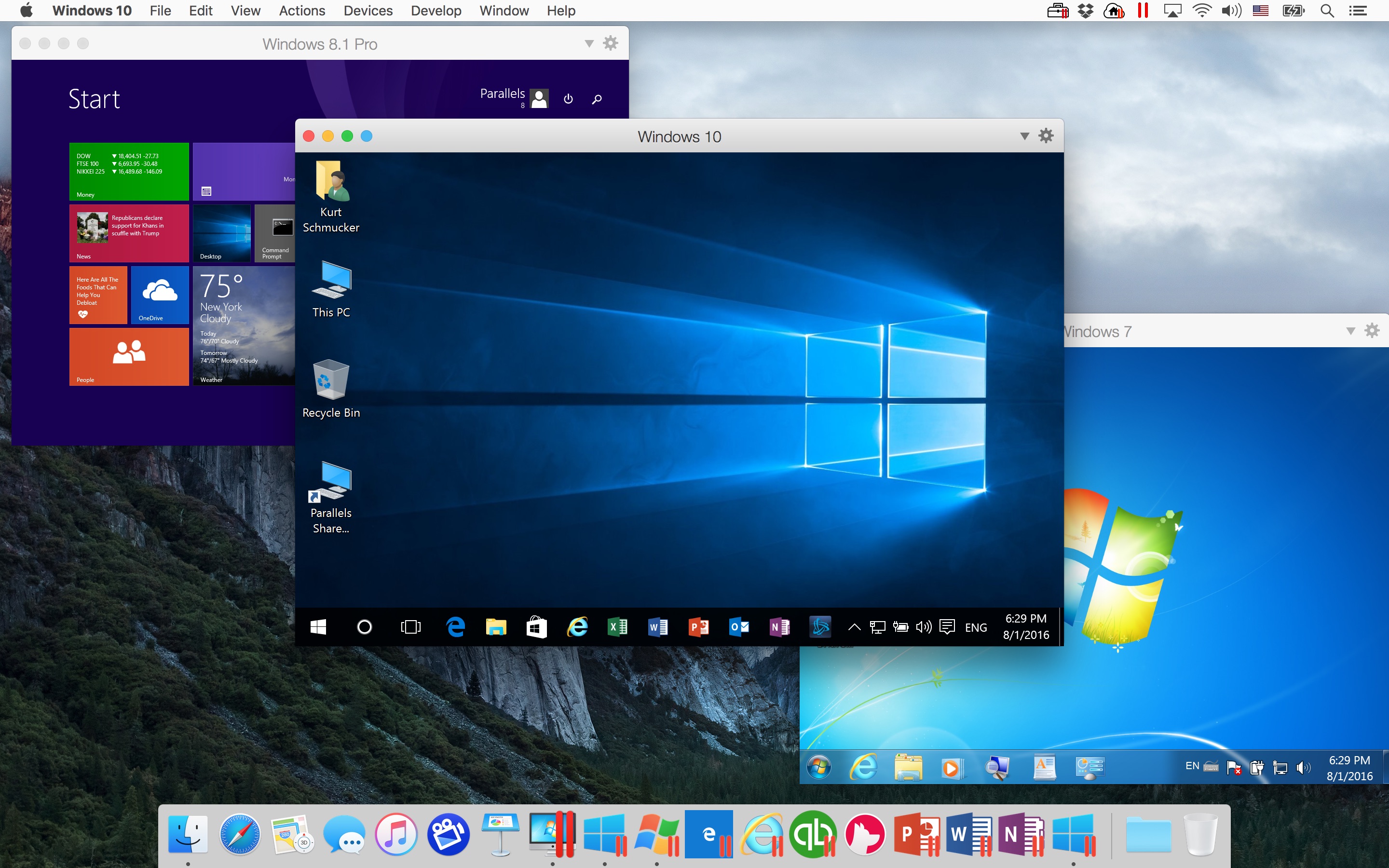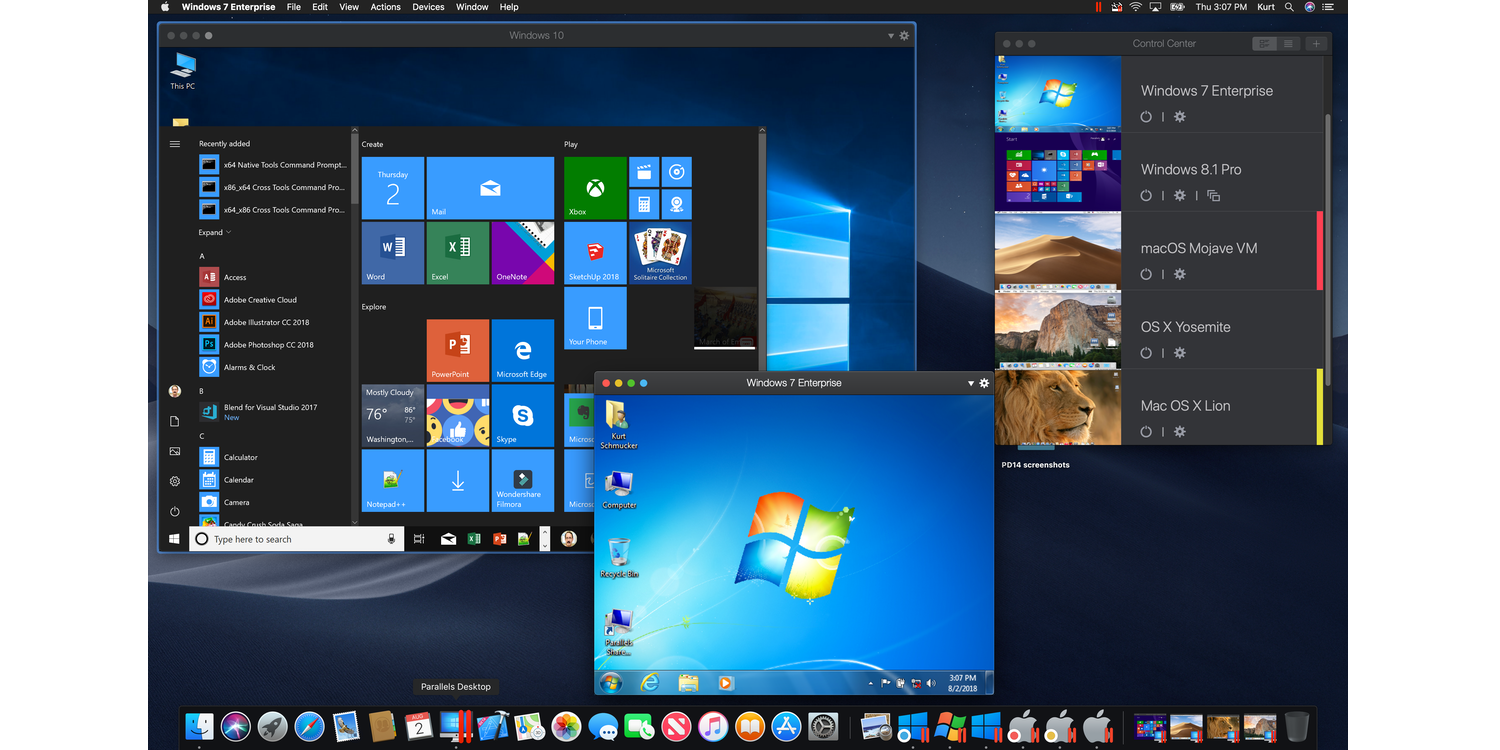-
Parallels Desktop, For Mac카테고리 없음 2020. 2. 1. 04:49

Parallels Desktop 12 crack Parallels Desktop 12 activation key is the ultimate solution to run your favorite Windows apps on your Mac effortlessly. Parallels Desktop review is an emulation program made especially for Mac users. It is considered the best competitor to Vmware Fusion Pro and Vmware; that have very similar features to allow users to run different operating systems designed for windows to work on your Mac computer. When comparing system virtualization technologies of the afore-mentioned programs, you notice that Parallels Desktop is rated much higher than Vmware Fusion Pro 2015.
Parallels Desktop 7 For Mac not only integrates with many of the new features in Lion, such as Launchpad and full-screen apps, the folks at Parallels have also been tweaking the code to provide higher performance, both in the basic virtualization application and in graphics performance.
Parallels desktop key Parallels desktop pro edition is the best software to run the virtual machine on your Mac machine. The software helps you to run Windows OS on your Mac without any need to have another windows machine, all that you need is a fresh copy of windows. Parallels Desktop key comes in many languages such as Portuguese, English, Russian, Italian, French, Spanish, Chinese. Virtual Box in various types of due to better optimization. Split Design is another great feature that is ideal for multitasking. It makes it possible for users to run more than one program all at the same time, without having to switch windows.
You can download parallels desktop review Parallels Desktop for windows is a powerful piece of software that allows the users to create the virtual machine easily. It will be able to run Windows OS on a Mac computer. Parallels Desktop download was made to work with various versions of Windows, and can also be used to install many others, like Android, Linux, Chrome OS. Through this software, you will now have limitless and abilities on your mac, which will make it a universal machine, capable of playing Windows-exclusive games and other Windows programs on Mac OS X.
Parallels desktop pro edition Parallels Desktop 11 Features:. As many as 90% faster Snapshot creations. Consolidated another solution of benefits known as unit compartment.
Run Windows 10 and macOS Sierra efficiently. Instinctive than if in the modern tool. Use Windows applications as if they are indigenous to Mac or PC. All Windows software support like working on the computer. Use Microsoft Cortana, your internet lover, on your own Mac. Enhance your virtual equipment modifications and delivery for us. Open up an internet site in Microsoft Explorer fitting from Safari browser.
Work windows on Mac without rebooting. Easy current support report or new OS. Select success, amusements, approach, or improvement. How to install & Crack:. First of all download software from the below link. Now Unrar the software using your terminal.
Open the installation text and also follow it. Install and Enjoy. System Requirements:. Memory: 256 MB available RAM.
Parallels Desktop For Mac Review
OS: Windows Vista, XP, 8, 7, 8.1, 10. Hard Drive Space: 50 MB free space on the hard drive. CPU: Intel Pentium 300 MHz or higher Download link.
For many Mac users, running Windows applications is a necessity. Perhaps your employer uses software that’s available only for Windows, or requires use of a Web site that relies on some Windows-only technology. For years, these users haven’t had many options. Microsoft’s was the best choice, but even on the fastest Macs, it provided a less-than-speedy Windows experience. Apple’s switch to Intel CPUs, however, means that running is suddenly much easier—there is no longer a need to emulate an entire CPU, as new Macs now use the same CPU as their Windows counterparts. This means that, in theory, running Windows on OS X should be both simpler and much faster than it was with Virtual PC. Apple’s allows new Intel Macs to boot directly into Windows XP (Pro or Home versions) and run it natively, with full support for accelerated graphics and hardware devices (other than the built-in iSight camera, that is).
But rebooting is time consuming, and Mac users would much rather stay in OS X and just run Windows when needed. Plus, Boot Camp only supports Windows XP. Enter Parallels Desktop for Mac, an OS X solution for running “guest” operating systems within OS X.
Parallels Desktop For Mac Free
Parallels utilizes the Intel chip’s hardware (VT). Although that’s a mouthful of buzzwords, what it means is simple: VT lets an Intel CPU act as if it were several distinct CPUs, which in turn enables guest operating systems to run much faster. What it really means to you, the user, is that you can run a wide variety of operating systems, including multiple versions of Windows—from 3.1 to 2000 to XP—as well as multiple versions of Linux, at very good speeds, and without ever rebooting your machine. Installation Installing Parallels is no different than installing any other OS X program that uses an installer.
Double-click the installer, follow the prompts, and wait for it to finish. After installation, you’ll find the program in the Parallels folder in the Applications folder.
Behind the scenes, Parallels has installed quite a few things on your machine, including a kernel extension (a low-level tool that modifies the core of OS X) to enable its magic. An included uninstaller worked well when I tested it, removing the program and its associated parts. Setting up As noted, Parallels can run many different operating systems. After launching the application, the first thing you must do is create a virtual machine (VM), specifying which OS you’re planning to install. You do this by answering a few questions in an easy-to-use setup wizard. Based on the OS you choose, Parallels appoints values for the hard drive size, CD-ROM, video, RAM, etc.
(You can customize these settings, if you wish.) Once everything’s set up, the next step is to install your chosen operating system. Parallels doesn’t include any operating systems, so it’s up to you to supply them. In the case of Windows, you’ll need the actual installation CDs. For Linux distributions, you may have image files (.iso) or burned CDs, depending on the source of the Linux distribution you’re using. (Parallels can handle both formats, though you’ll need to specify that you are using an image file during the setup process.) You simply insert your installation CD, press the Play button in the Parallels interface (see screen shot), and the virtual machine will “boot,” which begins the actual OS installation process. At this point, the guest operating system really has no clue that it’s being installed on a machine running a virtual version of a computer under OS X.
Parallels Desktop Review

To the installer, the machine looks like a dedicated, Intel-based computer system, with all of the appropriate hardware and software support. Depending on which OS you’ve chosen to install, you’ll spend anywhere from 10 to 45 minutes completing the installation.
Using Windows XP, for instance, I was able to install a fresh copy in about 30 minutes—basically the same amount of time it takes to install XP on a “real” computer. After installing Windows, you should make sure you boot the new operating system and run through the Parallels Tools installation. This toolkit will make your mouse work seamlessly between OS X and your virtual Windows machines, and it will enable more graphics resolution choices, among other features. This tool is also available for a few of the other supported OSes, such as OS/2. You can create as many VMs as you wish, assuming you have the drive space available to hold the image files. Usage After you have your guest OSes installed, using them in Parallels is essentially the same as using them on a standalone machine—with a couple of key exceptions. The first, and the biggest letdown for diehard gamers, is that Parallels can’t presently handle accelerated 3-D graphics.
So, while you can play Windows Solitaire just fine, you’ll have to use Boot Camp if you want to try out Half Life 2. The second limitation is that not every hardware device in your collection will work perfectly, if at all.

For instance, if you have a Windows Mobile 5 smartphone, you’ll need to install a free, third-party tool to successfully sync the device. You also might have trouble with some phones, media card readers, Webcams, scanners, and so forth. Some devices work perfectly, while others don’t work at all. While this situation will probably improve with future releases, if you need 100-percent hardware compatibility, then a reboot via Boot Camp is your best bet. But, if you don’t require 3-D accelerated graphics or full hardware support, then Parallels delivers solid results. To test Parallels’ performance, we ran, the official PC World testing tool, on both a and a, and we compared those results with the same machines running Windows XP Pro natively via Boot Camp, and with a few actual PCs.
